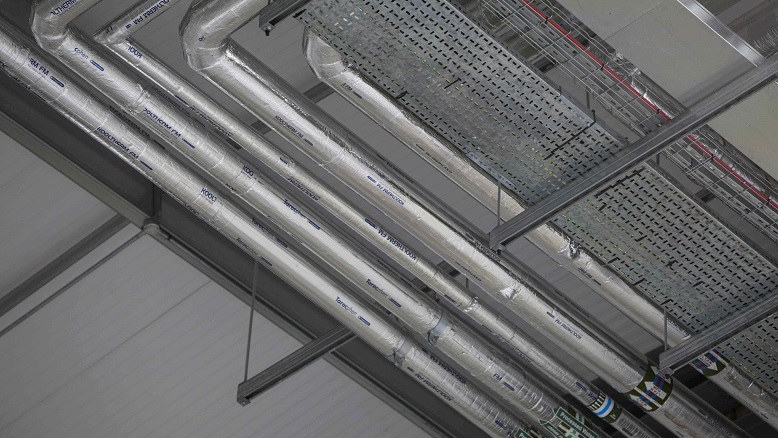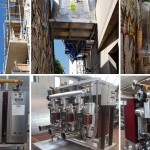How modular approaches are transforming building services
2018 felt like a breakthrough year for offsite construction, with developers across the country embracing modular methods and the government dedicating £420m to the development of new technologies. The building service sector has been amongst the most successful adopters of these approaches, achieving significant reductions in the scale and complexity of onsite work along, with greatly improved predictability.
BIM
As with other areas of the construction industry, the rising use of offsite approaches in the service sector is intimately linked to the adoption of Level 2 Building Information Modelling (BIM).
Building service engineers have traditionally been required to take a pragmatic approach to their work. Service specifications are often not finalised until projects are well progressed and practitioners typically must work around late changes in the design and layout of spaces when they arrive on site. In contrast, the collaborative approach of modelling, sharing and integration within Level 2 BIM, is now allowing service designs to be effectively ‘locked in’ before work even begins on site.
To give a sense of the scale of this change, the Building Engineering Services Association estimates that a typical BIM model may comprise just 70 standard drawing components for the main structure, compared with over 70,000 for mechanical and electrical services .
The ability of modelling software to automatically flag clashes has proven especially beneficial, allowing issues to be resolved at the design stage. The accuracy of these models is further aided by product-specific BIM objects, which are available from online libraries such as BIMstore. This certainty in design has been fundamental to the adoption of offsite approaches.
Offsite
By moving fabrication of services to dedicated manufacturing facilities, chaotic building sites and occasional scheduling conflicts are replaced with a clear, controlled and safe process. Large modular service units can be fabricated in preassembled standard configurations to a reliable schedule. Fabricators are readily able to access all sides of the sections without restrictions, allowing focused quality control, particularly on large and complex service modules. Problems with availability of skilled labour can also be reduced as staff are able to operate from a single location.
Once completed, sections can be held in storage until the site is ready to receive them and larger modules can be lifted into place with heavy machinery, often eliminating the need for scaffolding. In addition, as large, complex sections can be installed in a single action, the time spent working on site is cut down and site waste is greatly reduced.
Several firms have already reported significant improvements in operating efficiency through the use of BIM Level 2 and modular construction. For example, NG Bailey has highlighted typical cost savings of up to 35% (including labour reduction costs of 40%) and overall programme time savings of 90% .
In Practice
One project to benefit from the use of offsite service approaches is Airedale International Air Conditioning’s Headquarters. Following a serious fire, the building needed to be quickly reconstructed. BAM Construction used BIM at the design stage, and made the decision to deliver the industrial development as a turnkey project to help save time and resources.
Nick Howdle, project manager from BAM Construction, discussed the project: “Using BIM has been an invaluable resource for ensuring that we could accurately estimate the costings and timings, including effectively overlapping M&E installations without incident. We would have struggled to achieve the programme without offsite methods. BIM helped with clash detection, and we had zero snags with the pipework. On a £1.3 million package that is highly unusual, if not unheard of.”
The use of BIM also helped the project team to identify solutions which could meet the demanding performance criteria. For example, all pipe insulation used on the project was required to have FM Approval, whilst the pipe insulation fitted within the research and development test chamber had to support an extreme temperature range of between -20 to +50 degrees Celsius. The product BIM object and accompanying literature for Kingspan Kooltherm Pipe Insulation showed it could meet these requirements with a slim insulation thickness.
Next steps
The rise of modern methods of construction is only set to continue this year, with five government departments now committed to making a ‘presumption in favour’ of offsite manufacture for suitable capital programmes. By utilising modular building services within this approach, project teams can help to achieve further savings in project timescales and costs.

















Leave a Reply
Want to join the discussion?Feel free to contribute!